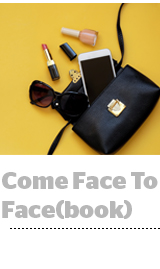 Since it began delivering makeup product lines in 2015, the London-based beauty startup Wunder2 demonstrates how savvy ecommerce companies can use Facebook targeting and video campaigns to push into retail distribution.
Since it began delivering makeup product lines in 2015, the London-based beauty startup Wunder2 demonstrates how savvy ecommerce companies can use Facebook targeting and video campaigns to push into retail distribution.
Wunder2 follows in the footsteps of Facebook-centric startup brands like the mattress-in-a-box manufacturer Purple, which landed its first retail distribution deal last month, and grooming subscription suppliers like Harry’s.
Wunder2 saw revenue double from $39 million in 2016 to about $80 million by the end of this year, said founder Michael Malinsky, an affiliate marketing vet. He started Wunder2 with little knowledge of the product – but he knew how to sell on Facebook and that makeup could be targeted online and manufactured at scale.
Wunder2’s sales may be a blip on the radar to large cosmetics companies, but the startup’s $75,000 per day average spend across Facebook and Instagram makes it big business for the social media giant.
Following Wunder2’s success selling online, Malinsky has been expanding into brick-and-mortar retail. The company went from selling its wares via a 500-store CVS pilot in the US last year to 4,000 stores with the chain this season. And it is in 8,000 total retail stores in North America and Europe.
But even as Wunder2 grows from its ecommerce roots, Facebook remains the company’s primary source of customer growth and media inventory.
“When we’re setting up retail programs, most of that demand is created by our digital-first presence,” Malinsky said.
Selling in brick-and-mortars has given the opportunity to expand its digital targeting parameters – all through Facebook, Malinsky said. It added location-based targeting to send deals or messages to potential customers in a geofenced proximity of stores carrying Wunder2.
Targeting ads to customers in stores has also proven effective. “It’s the kind of product that has a very strong customer connection on Instagram,” he said. Often people are about to point a camera at themselves.
Store transactions this year accounted for about 25% of all sales, which Malinsky said will remain well below the share driven by ecommerce even as the startup grows its retail footprint moving forward.
“Facebook plus Instagram is an environment where we understand how to find our consumer, explain our product and define the customer journey from curiosity to purchase,” he said.
Large CPG companies are being forced to heavily invest in expensive media like television because they aren’t seeing the scale they need to drive store sales from online platforms, Malinsky said. “That’s a big advantage, because our audience’s attention is online and can be reached more effectively than on television.”
This post was syndicated from Ad Exchanger.

More Stories
How NBC News’ Election Night Digital Wins Forecast the Future of Broadcast News
Around the World: AI & Christmas, a Temu crackdown and Aussie influencers
Here’s a Short Roundup for This Week